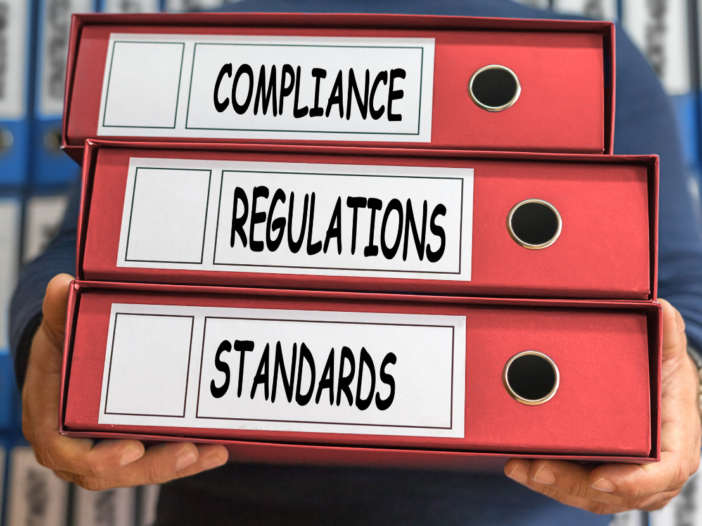
Conflict is an inevitable part of professional life. In this blog we discuss 10 conflict at work examples to highlight the root causes of most conflicts at work.
When conflicts remain unresolved they can escalate, leading to a range of negative consequences, including decreased productivity, high turnover rates and damage to an organisation’s hard-earned reputation.
Identifying the causes of conflict is the first step to preventing and managing it. Effective conflict management is crucial for a thriving, harmonious and productive working environment.

10 conflict at work examples
These are the 10 most frequent examples of conflict at work.
1. Personality clashes
According to CIPD research, the most common cause of workplace conflict is ‘differences in personality styles or working’.
Personality traits such as introversion versus extroversion, assertiveness versus passivity, and risk-taking versus caution, can create friction. An extroverted, assertive employee might dominate meetings, leaving introverted colleagues feeling overlooked or undervalued.
Employees may have varying attitudes towards work, authority, and collaboration. Clashes can occur when these differing attitudes lead to misunderstandings or perceived lack of respect.
Conflict can also occur due to how employees manage workplace pressures. Some might become more aggressive or demanding, while others might withdraw or become overly anxious. These differing responses can lead to conflicts in high-pressure situations.
2. Poor communication
A lack of clear communication can lead to confusion, mistakes, and frustration among employees. In fact, poor communication is common to all the workplace conflict examples.
These are some examples:
Poor listening skills
When employees or managers do not actively listen during conversations, important details can be missed, and miscommunication can occur. This can lead to employees feeling ignored and undervalued.
When employees feel they are not being heard or that their concerns are not being addressed due to poor communication, it can lead to frustration and resentment.
Unclear information
When information is not conveyed clearly, employees may interpret messages differently, leading to misunderstandings.
For example, if a manager gives vague instructions for a project, team members might have different interpretations of what needs to be done, resulting in inconsistent outputs and potential conflicts.
Lack of information
Lack of information can lead to errors in work. For instance, if an employee does not receive all the necessary information about a task, they may make mistakes that could have been avoided with proper communication. This can affect the overall quality of work and lead to frustration and blame.
Inconsistent messaging
When different managers or departments provide conflicting information, it can confuse employees about priorities and processes, leading to mistakes and inefficiency.
Inadequate feedback
When managers do not provide constructive feedback or only give vague comments, employees may not understand what they need to improve, leading to repeated mistakes and a lack of development.
Lack of transparency
When management does not communicate company changes, decisions, or updates clearly, it can create an environment of uncertainty and rumours. Employees might feel left out of the loop, leading to distrust and disengagement. See ‘Change and uncertainty’ below.
Ineffective meetings
Meetings that are not well-organised or that do not have a clear agenda can waste time and lead to confusion. If action items and decisions are not clearly communicated, it can result in employees not knowing their responsibilities.
3. Differences in values
Diverse personal values can lead to disagreements, especially when these influence work decisions and practices.
Factors that can lead to conflicts are:
Ethical standards
Employees may have different ethical standards, which can lead to disagreements over what constitutes acceptable behaviour or practices. Bullying and Harassment Training can provide employees and managers with awareness of what constitutes bullying and harassment and the skills to foster a positive, respectful workplace.
Here are examples of conflict in the workplace:
- One employee prioritises honesty and transparency in all communications, while another believes that withholding certain information is acceptable to protect company interests.
- An employer makes a decision that prioritises profit over environmental sustainability which clashes with the values of employees who prioritise ethical and sustainable practices.
Work ethics
Differences in work ethics, such as attitudes towards punctuality, dedication, and commitment, can create tension. An employee who values hard work and long hours might resent a colleague who prefers a better work-life balance or appears to be less committed.
Company policies
Conflicts may arise over company policies that align or misalign with employees’ personal beliefs. For example, policies on remote work, gender equality, or corporate social responsibility may be contentious if they do not align with the values of all employees.
4. Unfair treatment
Perceptions of favouritism, discrimination, or unfair treatment by management can lead to resentment and conflict within a team.
When employees believe that certain individuals are receiving preferential treatment from management, it can lead to feelings of resentment and demotivation.
Unfair treatment based on protected characteristics such as race, gender, age, religion, or sexual orientation can lead to significant conflict and dissatisfaction. Discrimination on the grounds of the characteristics listed in the Equality Act 2010 is against the law.
These are examples of unfair treatment at work:
Inconsistent application of policies
When organisational policies and rules are not applied consistently to all employees, it can lead to perceptions of unfairness. For instance, if some employees are allowed flexible working hours while others are not, it can create a sense of injustice.
Unfair performance evaluation
Biased or subjective performance evaluations can lead to conflicts, especially if employees feel they are not being assessed fairly compared to their peers. This can affect promotions, raises, and professional development opportunities.
Promotions and career advancement
If certain employees are consistently promoted over others without clear, merit-based reasons, it can lead to frustration and demotivation among those who feel overlooked.
Salary disparities
Significant differences in pay for employees performing similar roles can create tension, especially if there is no transparent or justified reason for the disparity.
Access to opportunities
Employees may feel unfairly treated if they are consistently denied opportunities for training, development, or high-profile projects that are available to others.
Disciplinary action
If disciplinary actions are perceived as being applied more harshly to some employees than others, it can lead to accusations of unfair treatment and bias.
5. Poor management
When managers lack the skills or experience to lead effectively, it can result in poor decision-making, lack of direction, and inadequate support for employees. This can create confusion and frustration among team members.
These are examples:
Poor communication
Managers who do not communicate effectively can create misunderstandings and misinformation. For example, failing to provide timely updates on important projects or not being available to answer questions can lead to frustration and errors. See ‘Poor communication’ above.
Fostering uncertainty
Managers who make decisions arbitrarily or change their minds frequently can create an unpredictable work environment. Employees may feel uncertain about their roles and responsibilities, leading to decreased morale and increased conflict. See ‘Change and uncertainty’ below.
Failing to support
Managers who do not provide adequate support, whether in terms of resources, guidance, or feedback, can leave employees feeling undervalued and unsupported. This can lead to decreased job satisfaction and increased tension.
Micromanagement
Managers who closely control every aspect of their employees’ work can stifle creativity and autonomy. This can lead to resentment and decreased motivation among employees who feel they are not trusted to perform their jobs.
Unclear expectations
When managers do not set clear goals and expectations, employees may struggle to understand what is required of them. This can cause confusion, mistakes, and conflicts over task responsibilities.
Failure to address issues
When managers do not address conflicts, performance issues, or employee concerns promptly and effectively, these issues can escalate. Ignoring problems can create a toxic work environment and increase employee dissatisfaction.
6. Change and uncertainty
Organisational changes often lead to uncertainty about job security, roles, and prospects, causing anxiety and stress among employees. This heightened stress can reduce their ability to cope with additional pressures, leading to conflict.
In the absence of clear communication, rumours and misinformation can spread, exacerbating fears and misunderstandings. This can lead to further anxiety and conflicts among employees.
Employees may resist changes due to fear of the unknown or discomfort with new processes and expectations. This resistance can manifest as passive or active opposition, creating friction between employees and management.
7. Workload imbalances
These are examples of situations where workload imbalances can lead to conflict:
Unequal task distribution
Unequal task distribution can spark conflicts among team members. Those who are overburdened may feel unsupported, while those with lighter workloads may feel undervalued.
Unfair allocation of overtime
If overtime opportunities or requirements are not evenly distributed, it can lead to resentment.
Lack of recognition
Overburdened employees may feel their extra efforts are not recognised or rewarded. This lack of recognition can lead to dissatisfaction and disengagement.
Inefficiencies due to skill mismatches
Sometimes workload imbalances occur because tasks are not assigned based on employees’ strengths and skills. This can lead to inefficiencies and frustration as employees struggle with tasks they are not trained to do.
8. Stress and burnout
High stress levels and burnout can lower employees’ emotional resilience, making them more susceptible to irritability and frustration. This can lead to increased conflicts over minor issues that might otherwise be overlooked or handled calmly.
For more about managing stress in the workplace, please see our article the benefits of managing employee stress and wellbeing.
Here are some ways stress can lead to conflict:
Poor work performance
Stressed employees may struggle to focus, complete tasks efficiently, or meet deadlines, and they may make fundamental mistakes. This decline in performance can lead to conflicts with colleagues and supervisors.
High absenteeism
Burnout often results in higher absenteeism as employees take more sick days or personal leave to recover. This can place additional burdens on remaining staff, leading to resentment and conflicts over workload distribution.
Misunderstandings
Stressed employees are more likely to have short tempers and less patience, leading to frequent arguments and misunderstandings with colleagues. For example, a minor disagreement over project details can escalate into a significant conflict.
Poor teamwork
Burnout can lead to withdrawal and disengagement from team activities. Employees suffering from burnout might isolate themselves, reducing team cohesion and collaboration, which can result in miscommunication and conflicts.
Isolation and frustration
Employees experiencing burnout may feel unsupported by their managers or colleagues, leading to feelings of isolation and frustration. This perceived lack of support can exacerbate stress and lead to conflicts.
9. Limited access to resources
Limited access to resources such as time, money, equipment, or human resources can lead to competition and conflict among employees.
Limited resources can create high-pressure situations where employees feel stressed about meeting deadlines or achieving targets with insufficient support. This stress can exacerbate conflicts and reduce overall productivity and morale.
Resource scarcity can also lead to a competitive rather than collaborative environment, where employees or departments are less willing to share information, knowledge, or support, fearing that doing so might jeopardise their own resource needs.
10. Unclear job roles
Ambiguity in job descriptions and responsibilities can cause confusion and conflicts over who is responsible for what tasks.
Without clear delineation of roles, multiple employees may end up working on the same tasks, leading to duplication of effort, inefficiency, and potential conflict over ownership of work.
When roles are ambiguous, it can be difficult to hold employees accountable for specific tasks or outcomes. This can lead to a lack of responsibility and ownership, with employees passing the buck and blaming others for mistakes or missed deadlines.
Ambiguity can lead to frustration and dissatisfaction among employees who feel they are not being utilised effectively or who are unsure how their performance will be evaluated.
Conflict Resolution Training for managers and employees
Through conflict at work examples, our Conflict Resolution Training helps employees to understand the types of conflict at work and the causes and consequences. The course supports them to develop the skills to prevent and manage conflicts with confidence.
Effective conflict management can lead to more efficient decision-making processes as teams learn to discuss differing viewpoints constructively and reach consensus more swiftly. This can foster innovation, as diverse perspectives are integrated into solutions.
Conflict resolution training helps to build a supportive and collaborative work environment which encourages positive team dynamics and contributes towards organisational success.
To find out more, please visit our Conflict Resolution Training webpage to find out more, or contact our friendly team on 0203 011 4242/info@praxis42.com

